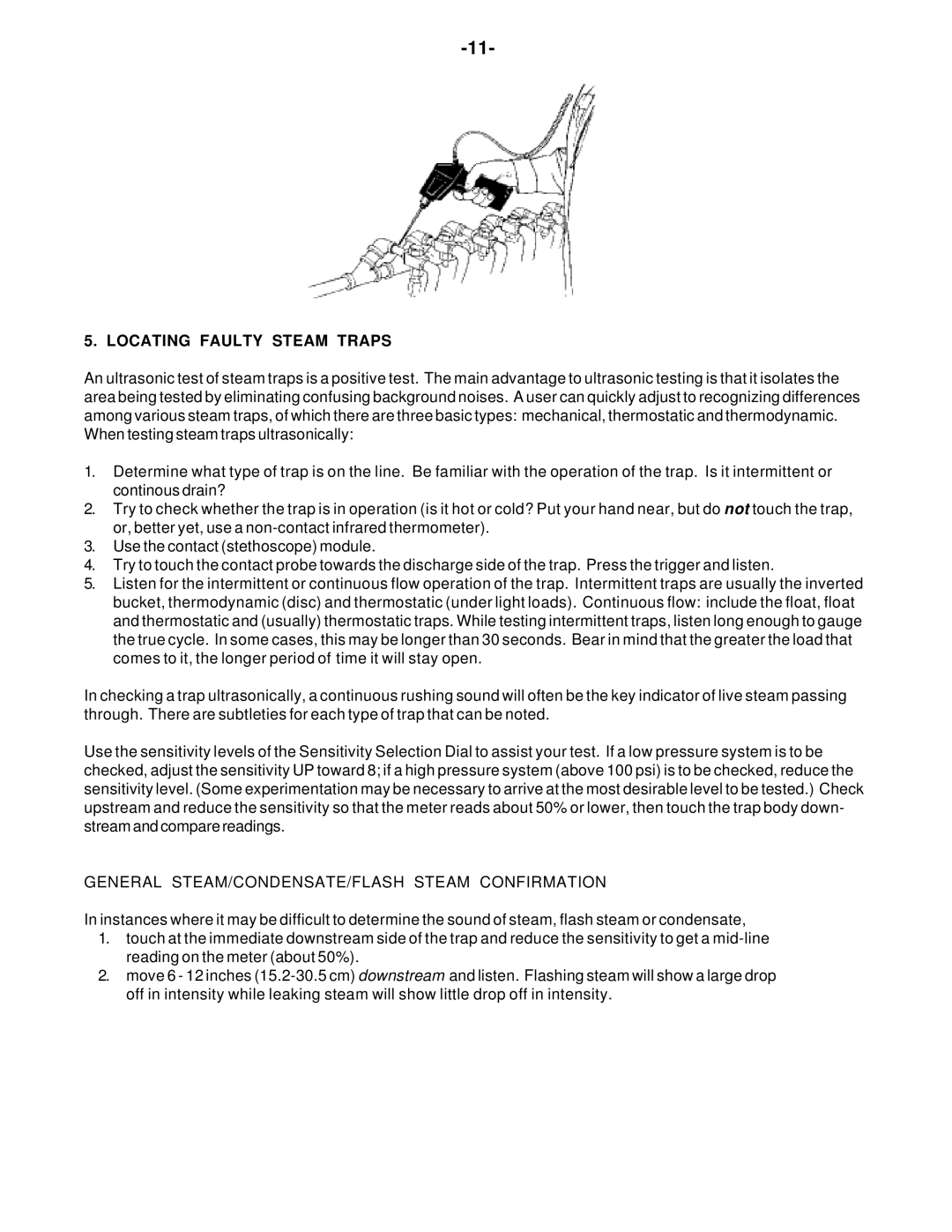
trap shot
5. LOCATING FAULTY STEAM TRAPS
An ultrasonic test of steam traps is a positive test. The main advantage to ultrasonic testing is that it isolates the area being tested by eliminating confusing background noises. A user can quickly adjust to recognizing differences among various steam traps, of which there are three basic types: mechanical, thermostatic and thermodynamic. When testing steam traps ultrasonically:
1.Determine what type of trap is on the line. Be familiar with the operation of the trap. Is it intermittent or continous drain?
2.Try to check whether the trap is in operation (is it hot or cold? Put your hand near, but do not touch the trap, or, better yet, use a
3.Use the contact (stethoscope) module.
4.Try to touch the contact probe towards the discharge side of the trap. Press the trigger and listen.
5.Listen for the intermittent or continuous flow operation of the trap. Intermittent traps are usually the inverted bucket, thermodynamic (disc) and thermostatic (under light loads). Continuous flow: include the float, float and thermostatic and (usually) thermostatic traps. While testing intermittent traps, listen long enough to gauge the true cycle. In some cases, this may be longer than 30 seconds. Bear in mind that the greater the load that comes to it, the longer period of time it will stay open.
In checking a trap ultrasonically, a continuous rushing sound will often be the key indicator of live steam passing through. There are subtleties for each type of trap that can be noted.
Use the sensitivity levels of the Sensitivity Selection Dial to assist your test. If a low pressure system is to be checked, adjust the sensitivity UP toward 8; if a high pressure system (above 100 psi) is to be checked, reduce the sensitivity level. (Some experimentation may be necessary to arrive at the most desirable level to be tested.) Check upstream and reduce the sensitivity so that the meter reads about 50% or lower, then touch the trap body down- stream and compare readings.
GENERAL STEAM/CONDENSATE/FLASH STEAM CONFIRMATION
In instances where it may be difficult to determine the sound of steam, flash steam or condensate,
1.touch at the immediate downstream side of the trap and reduce the sensitivity to get a
2.move 6 - 12 inches
